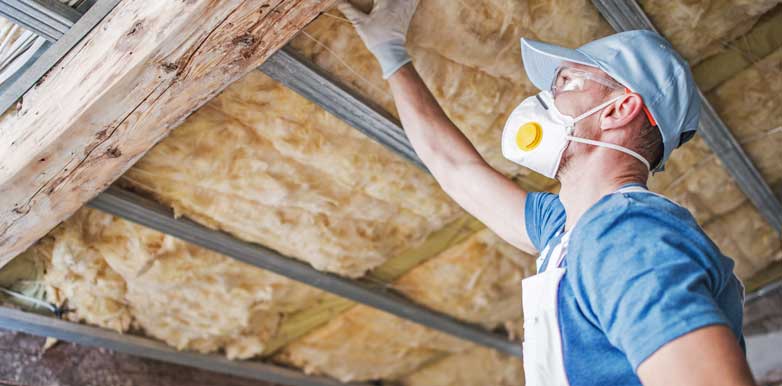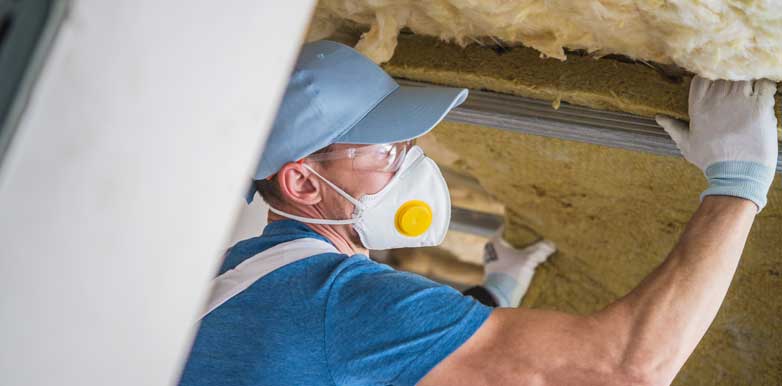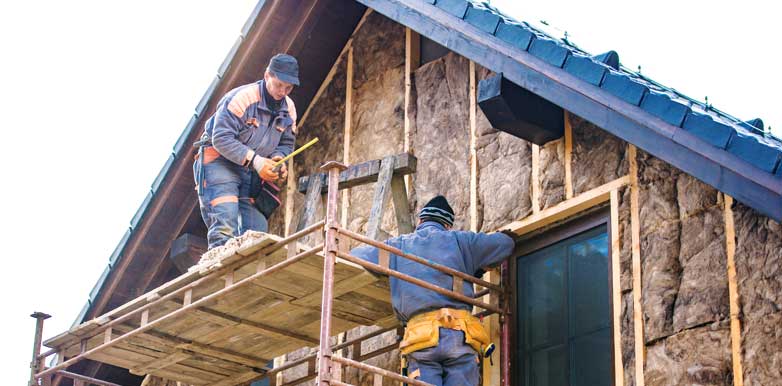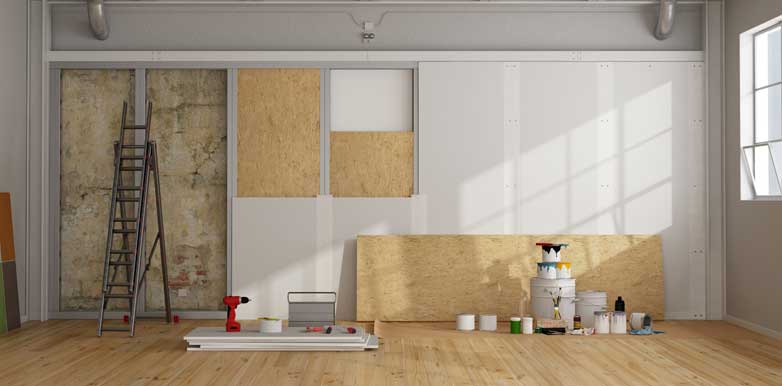How Does Mineral Wool Insulation Work?

The use of insulation in your home can reduce your energy bills dramatically with research showing that you can lose up to 25% of heat through your roof and 35% through your walls and around your windows. The simple installation of insulation in your loft space or walls will not only reduce your heating bills, it will also reduce the impact that your home has on the environment.
Roof insulation can quite often be installed by a keen DIYer, although it is dependent on each individual home and circumstance, so it is always advised to enlist the advice of a professional before you begin any work or purchase any materials.
To give you a simple overview of mineral wool insulation and its main benefits, we’ve compiled answers to the most commonly asked questions below.
Is Mineral Wool Insulation Easy to Use?
Mineral Wool is one of the most commonly used insulation materials and this is largely thanks to its ease of installation, although factors such as a low price point also help. Mineral wool typically comes in three forms; as a roll, which can simply be rolled out, slabs (sometimes termed batts) or boards. And because it’s incredibly light it’s easy to push the mineral wool in between batons or rafters and mould it with your hands to fit the shape perfectly. Often you will find that the mineral wool holds in place once compacted into the space but the addition of batons on top can add further resistance. Mineral wool can also be used to form a second layer of roof insulation on top of an older layer which may be lacking in efficiency, find out more about this in our recent article.

What is Mineral Wool Insulation Made Of?
Mineral wool is made up of 98% natural igneous rock or slag (which is industrial waste) with the remaining 2% made up of an adhesive or thermosetting resin binder. And, although this might not sound very pleasant to handle, mineral wool is actually a thick, quite soft, material. The different components within the wool have been melted down and then spun or drawn (stretched) in order to reach the soft consistency that you buy the wool in.
Is Mineral Wool Eco-friendly?
Many brands of mineral wool insulation have a high level of recycled content and can include up to 80% of recycled materials. Because of this it is categorised as an eco-friendly material and in addition, most mineral wool insulation can be recycled or re-used after use. Typically there is no wastage as every last piece can be used, with left over pieces simply being able to be pushed into cracks or crevices. Some brands such as Rockwool also commit to ensuring that 100% of their production waste is recycled and turned into new products.

Is Mineral Wool Water Resistant?
Mineral Wool insulation is highly resistant to moisture and water and will not absorb it. However, its important to seek out the source of any dampness if you do spot any, because although it won’t damage the insulation it could damage the material around it, for example, wooden roof rafters. So it’s essential to eliminate any sources of moisture before laying insulation, and if you are laying an additional layer on top of an already present insulation, make sure that you assess it for any moisture first.
Is Mineral Wool Insulation Safe to Use?
Whilst mineral wool has been used safely for over 60 years it is recommended that you always wear protective gear, including a mask and gloves, whenever you come into contact with it as it can cause irritation to the respiratory system.
Fire Safety
Mineral wool insulation can withstand high temperatures and it’s naturally fire resistant so it’s a brilliant product to use if you are concerned about fire safety. Rockwool stone wool specify that their product can withstand temperatures exceeding 1000 degrees Celsius, the binder in the insulation will melt at 250 degrees Celsius but the remaining fibres will stay intact, protecting the material beneath it from being affected by the fire.
Sound Insulation
The other big advantage of mineral wool insulation is its ability to provide outstanding soundproofing. It effectively forms an acoustic barrier preventing noise from transferring from one room to another and it is considered one of the best products to use for this job.

The R Value and U Value of Mineral Wool Insulation
The R value of a product is it’s resistance to heat flow (the bigger the R value the better it is at insulating your home) and mineral wool can have an R-value of 3.7-4.2 which is an extremely high R-value in comparison to some other forms of insulation.
The U value is the rate of heat transfer and a low U value means that the product transfers less heat and therefore is a better insulator. Depending on the thickness of mineral wool insulation applied it can have a u value as low as 0.10.
What is the Difference Between Mineral Wool and Glass Mineral Wool Insulation?
The difference between the two is its main ingredients; as the name suggests, glass wool insulation (or fibreglass) is made from glass fibres, whereas mineral wool is made from igneous rock or slag. Both materials are put through a similar process of being melted down and then spun into fibres resulting in a similar material with a woolly consistency.
Further Information
You can find a full range of insulation here at Roofing Megastore including brands such as Knauf insulation and Rockwool insulation. And if you would like further information about mineral wool insulation, feel free to give our friendly customer services team a call on 01295 565565 or via the instant chat on our website. You can also follow us on Facebook, Instagram or Twitter for further hints and tips and brilliant discounts and offers.